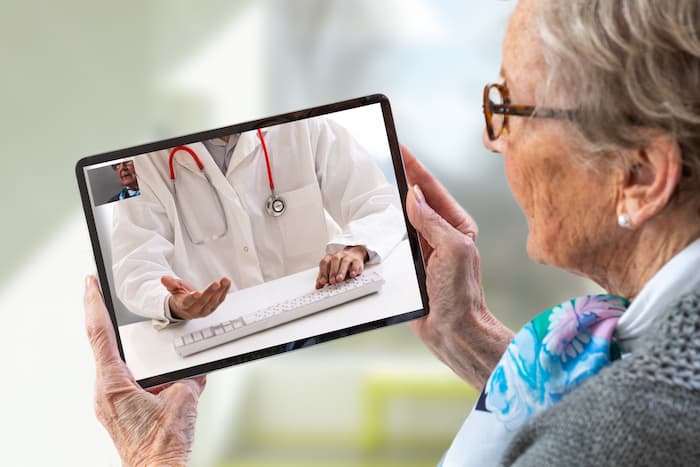The pandemic accelerated the adoption of virtual care, and its popularity remains. While debate is underway about how virtual healthcare should evolve, it’s clear that patients want it. For physicians, it’s a mixed bag as many acknowledge the convenience but prefer to see patients in person. A recent McKinsey & Company survey found that 62% of responding physicians recommended in-person visits over virtual care.
Physicians also face a complex challenge of maintaining the infrastructure behind virtual care. And so far, the seamless integration between electronic health records and virtual back-end systems remains elusive.
Now, as virtual care’s foundation begins to form with administrators and policy officials developing new regulations, health providers must thoroughly contemplate virtual care’s strengths and weaknesses.
IN PERSON VS. VIRTUAL CARE
As a practicing physician and someone who has a long history with healthcare technology, I’m excited for what’s to come. Prior to the pandemic, a worrisome ailment would lead to a doctor’s office visit, with virtual care reserved for patients with limited access to providers. But over the last two years, usage has surged.
Early on, I saw the promise of virtual care and how it eased the burdens of scheduling transportation, child care, or simply getting time off work. With provider shortages being a common issue in rural or underserved areas, I believed telehealth was a solution for closing “the access gap.”
Virtual care’s evolution will have a large impact on patient-doctor relations. Solutions that reduce processing times and improve workflow for health providers are likely to gain traction as mass adoption continues. Overall, virtual care is well positioned to grow as more healthcare providers take a comprehensive approach to disease management.
I gained much of my experience with virtual care from my practice at Veterans Administration. Initially, with a patient population that spanned a wide socioeconomic spectrum, I had concerns about the “digital divide” and if some had access to capable smartphones or robust internet service. Some of my concerns remain today as certain patient populations are challenged with simply finding a quiet place to experience a virtual visit.
In general, equitable access to virtual care is a valid concern for many healthcare providers. A RAND Corporation study conducted during the first months of the pandemic showed that the greatest increase in virtual care users occurred among counties with low poverty levels and in mainly metropolitan locations.
VIRTUAL CARE’S PROMISE
Eventually, the fears of a “digital divide” were debunked. Most of the patient groups had digital access, but many weren’t interested in virtual care, citing what I call the “Robocaller Effect.” If you call customer service and an automated phone system responds versus engaging with a live operator, which do you prefer? Many people prefer to speak to a person when they call.
For my patients, I focus on building a relationship and, after establishing trust, introduce virtual care as an option. My HIV patient population is a good example. Part of their treatment requires lots of testing and lab work with a regimen that requires discipline. This population has a firm understanding of their disease and follow a strict routine in taking their medication, which translates into virtual visits that are focused and detailed but very social. Telehealth allows for an alternate means to connect patients to care for those who may not have access to treatment in conventional methods. The exchanges I have with this population during their virtual visits exemplify the ideal scenario.
For many of my other patients, utilizing virtual care is selective. They would prefer to use virtual for simple exchanges like test results and in-person visits for a serious diagnosis or to discuss detailed treatment.
Across the spectrum, I expect adoption to continue at the current swift pace, but to occur unevenly. Specialty areas like psychiatry would likely have stronger use cases than dermatology.
As we emerge from the healthcare crisis, we must be strategic in how we utilize this promising technology. Virtual care will continue to be an essential treatment management tool that can make healthcare more affordable and more accessible for millions of people.
Summerpal Kahlon, MD
Summerpal Kahlon, MD is the vice president of value analytics at Change Healthcare and a practicing physician. He serves as an advocate for the advancement of value-based care, engaging stakeholders across the healthcare continuum to promote adoption of advanced healthcare delivery models.








